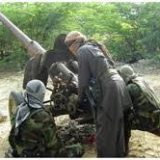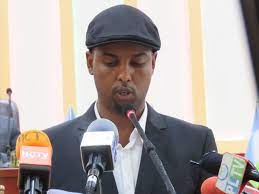SOMALIA: MISSION ACOMPLISHED: The international community’s ambitions and the rush to declare success in Somalia through piecemeal solutions developed under the umbrella of Vision 2016.
SOMALIA: MISSION ACOMPLISHED: The international community’s ambitions and the rush to declare success in Somalia through piecemeal solutions developed under the umbrella of Vision 2016.
The international community has been involved in Somalia since 1991, providing both political and humanitarian support to curb widespread famine and assist with the country’s capacity building following the crisis that has engulfed Somalia over the past two decades. It appears, however, that the international community has also come to the sober realization that there is no quick fix and that Somalia’s political problems run much deeper than initially contemplated. Notwithstanding the piecemeal approach to aid and reform, there are currently few opposing clientele: the international donors who are desperate to see a return of their investment and the Somali leaders, business people and neighbouring countries that see potential benefits in the perpetuation of the status-quo.
The foreign involvement in Somalia
The principle strategy behind the humanitarian and development interventions led by the international community was to put in place measures to address the country’s unfolding crisis, but, in the end, it did very little to prevent the crisis. After the complete collapse of the Somali state in 1991, all institutions and political system within the country were destroyed by the civil war. This civil strife combined with religious exploitation, drought and famine has secured Somalia as one of the most dangerous countries to live.
Despite the countless peace initiatives sponsored by the UN from 1991-2004, which were projected to bring some normalcy to the country, outside interference brought a perpetuation of the political crisis and further enhanced the mistrust between the people. Now, more than two decades later, the international community understands that they have vastly underestimated the depth of the conflicts in Somalia. Furthermore, a kind of “Somalia fatigue” seems to have set in with both internal and external actors. In this context, one can argue that this weariness explains in part the reason with which the international community recognized the current government as Somalia’s official central government in 2013. Thus, the current strategy from the international stakeholders is to find an exit strategy to save face.
Somalia is a clan-based society with a history of interclan mistrust, which was exacerbated by the civil war. This is an issue that only the Somalis themselves can solve with only a supporting role from the international community. There is Somali proverb that I have recently learned: “Alifkii yaraanta kaa xumaada, Albaqruu ku dhibaa” which loosely translated means to succeed later in life, one needs a solid foundation in the basics at early age. For real nation building to take hold in Somalia, an honest reevaluation of the conflict and truth and reconciliation is needed. As Somali leaders discuss Vision 2016 for the rebuilding of the country, they must take a hard look at what this country is about and what is required to reach its goal.
Building Somali federation:
In 2012, Somalia had a provisional constitution that laid the foundation for a pluralistic, united Somalia under a federalist system of governance. The constitution established that, to achieve Somali federalism, there would be regions or states making up the federation. Article 49 of the Provisional Constitution stipulates that two or more regions could form a federal state on voluntary basis. However, this concept has been under siege of late with the help, or lack thereof, from international stakeholders and the Somali federal government, who, by creating a parallel constitution, are either intentionally or unintentionally attempting to extend the originally agreed vision by a decree or to omit it all together. One can argue, this seemingly dismissal of the country’s constitution can be attributed the mandated Vision 2016.
While to have a quick fix in place for Somali issues is, in part, the international community’s exit strategy, it is not clear how it would benefit the country or the Somali leaders who seem eager to forge an unrealistic vision of unity with no proper foundation. As I have written previously, “Vision 2016 is a very good plan, but clarity on how this ambitious and important vision will be put together realistically and in a timely, manner still needs to be established.” Click to read related article. I don’t believe the foundation to implement such a vision in 2016 has been laid out due to lack of adequate time and resources. There is a saying that “you can bring a horse to water, but you cannot make the horse drink.” Unfortunately, the future of Somalia seems to be led by blind ambitions. The international community is blinded by the desire to find a quick solution and a clear exit, while the Somali leaders are blinded by greed and narrow personal gains at the expense of wider good for the country.
Moreover, for the last few years, the international community represented by the heads of UNSOM, IGAD and EU have acted as Somalia’s ceremonial guards. They have attended every gathering and ceremony in order to sign and legitimatize decrees, including the recent and highly contentious Mudug and Galgaduud fiasco. As was obvious to any thoughtful and sensible Somali, an agreement where all the right stakeholders did not participate in the discussion would doom to create conflict. And yet the Somali leadership and international parties stood in front of the nation and the world, signing an agreement that confers a region a status of a federal member state, fully cognisant that it was contested for not fulfilling the basic constitutional requirement for a state. In the current charged climate and the mistrust between the leadership at both federal and regional levels, the motivation behind such an act is not clear. The political and leadership landscape in Somalia has become toxic and needs remediation; a cleaning up that requires less international involvement and more (genuine) Somali participation. The Somali people are responsible for their predicament and should be allowed to resolve it themselves, through traditional conflict resolution processes, where trust exists between parties rather than money and legitimization by foreign powers.
The way forward:
Reconciliation is a much-abused concept in contemporary Somali politics. Multiple foreign-sponsored reconciliation conferences with no meaningful outcomes have thrown the notion into disrepute. Presently, the call for reconciliation has become a code word for political leaders bereft of leadership. Nevertheless, I do believe that Somalia does need a genuine truth and reconciliation initiative; one that is driven by the people to resolve the major problems that this country is facing. Somali people are very forgiving when there is understanding and good faith between them; it is part of the foundation of Somali tradition. The longer that leaders delay or deny this simple fact, the longer the patched-up solutions will continue and the longer the country will stay its course of self-destruction. I am not a pessimist, but it must be acknowledged that Somalia has been in conflict for the last two decades; Somalia’s clans have accusations and suspicions towards and against each other, yet the government wants to create a harmonious country. As I have stated previously, “In order to achieve Somali unity, there need to be an absolute peaceful political and community reconciliation and secure local solutions to local problems.” Click to read related article.
The rush to reach a vision that will not bring stability or resolution to Somalia’s current situation will only delay the inevitability of future reconciliation and will prolong the country’s status as a fractured country. It is time for the country’s leadership to take ownership of and responsibility for their own actions and to act as humble leaders of a broken country that needs to be minded and put on the road to recovery. International donors must realize that Somalia is not a quick-fix project and that their investments will not come to fruition, as long as they are intertwined with the political process of Somalia’s solution. The Somali mission will only be accomplished when the people of Somalia solve their own conflict the way their custom dictates: gogol dhigasho, ismaqal, wadatashi, xaqsoorid, and iscafis. As we all have a stake in Somalia’s future, we need to focus on those crucial elements that can genuinely move the country forward which are reconciliation and forgiveness, not division and new conflict.
Farhia Ali Abdi.



















